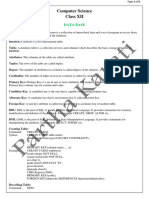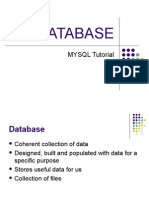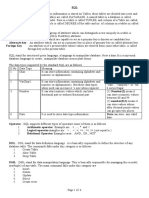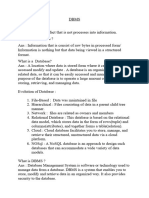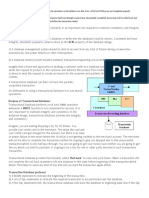0% found this document useful (0 votes)
94 views17 pagesER Diagrams and SQL Commands Guide
The document discusses entity relationship (ER) diagrams and their components. It defines ER diagrams as diagrams that show the relationships of entity sets stored in a database using rectangles, ellipses, diamonds and lines. The key components of ER diagrams are identified as entities, attributes, and relationships. Entities are real world things, attributes are single valued properties, and relationships define associations between entities. Examples of each component and their symbols in ER diagrams are provided.
Uploaded by
Tushar VermaCopyright
© © All Rights Reserved
We take content rights seriously. If you suspect this is your content, claim it here.
Available Formats
Download as DOCX, PDF, TXT or read online on Scribd
0% found this document useful (0 votes)
94 views17 pagesER Diagrams and SQL Commands Guide
The document discusses entity relationship (ER) diagrams and their components. It defines ER diagrams as diagrams that show the relationships of entity sets stored in a database using rectangles, ellipses, diamonds and lines. The key components of ER diagrams are identified as entities, attributes, and relationships. Entities are real world things, attributes are single valued properties, and relationships define associations between entities. Examples of each component and their symbols in ER diagrams are provided.
Uploaded by
Tushar VermaCopyright
© © All Rights Reserved
We take content rights seriously. If you suspect this is your content, claim it here.
Available Formats
Download as DOCX, PDF, TXT or read online on Scribd
/ 17










